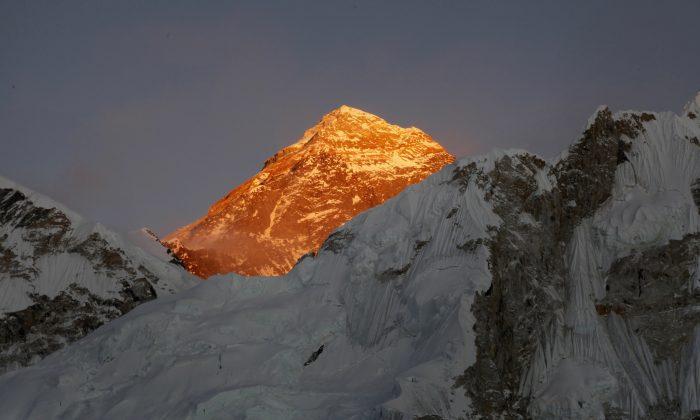KATHMANDU, Nepal—A 35-year-old Dutch man and an Australian woman suffered from high-altitude sickness and died on their way down from Mount Everest’s summit in the first deaths confirmed this year on the world’s highest mountain, an expedition organizer said Saturday.
The Dutch man, Eric Arnold, died near the South Col on Friday night, said Pasang Phurba of the Seven Summit Treks agency in Kathmandu.
The Australian woman, Maria Strydom was a Monash University lecturer. She also died from altitude sickness and reportedly suffered a stroke and snow blindness while making her descent, according to the Sydney Morning Herald.
Arnold had enough bottled oxygen with him as well as climbing partners, but he complained of getting weak and died before he was able to descend to a lower altitude, Phurba said.
He said more details were not available because of poor communications with the crew on the 8,850-meter (29,035-foot) mountain, and that it would take days and several people to bring the bodies down.
Arnold was from the Dutch city of Rotterdam, according to his Twitter account. The last Twitter post, made Friday, said, “Mountain climber Eric Arnold reaches the summit of Mount Everest at the fifth attempt.”
In a local television interview early this year, Arnold said conquering Everest was a childhood dream.
“I used to have a poster of Mount Everest above my bed,” he told RTV Rijnmond.
In the interview, he said he was aware that the risks of climbing the world’s highest peak did not end at the summit.
“Two-thirds of the accidents happen on the way down,” he said. “If you get euphoric and think ‘I have reached my goal,’ the most dangerous part is still ahead of you.”
In addition, a 45-year-old woman from Norway, Siv Harstad, was helped down from the top of Everest on Saturday by two Sherpa guides after suffering from snow blindness, the Norwegian news agency NTB said.
The incidents come as Nepal’s mountaineering community is still recovering from the past two climbing seasons, which were hit by disasters. Nepal’s devastating earthquake last year caused an avalanche that killed 19 people at Everest base camp, and in 2014, an avalanche above the base camp killed 16 Sherpa guides.
Arnold told RTV Rijnmond that one of his previous attempts to conquer Everest ended last year when he was at base camp as it was hit by the avalanche.
Favorable weather has allowed hundreds of climbers to scale Everest since last week. More than 330 climbers have reached the summit from Nepal since May 11, and several more have done so from the northern routes in Tibet.
The popular Everest spring climbing season began in March and runs through May, before harsh weather conditions make it especially difficult to climb.






Friends Read Free